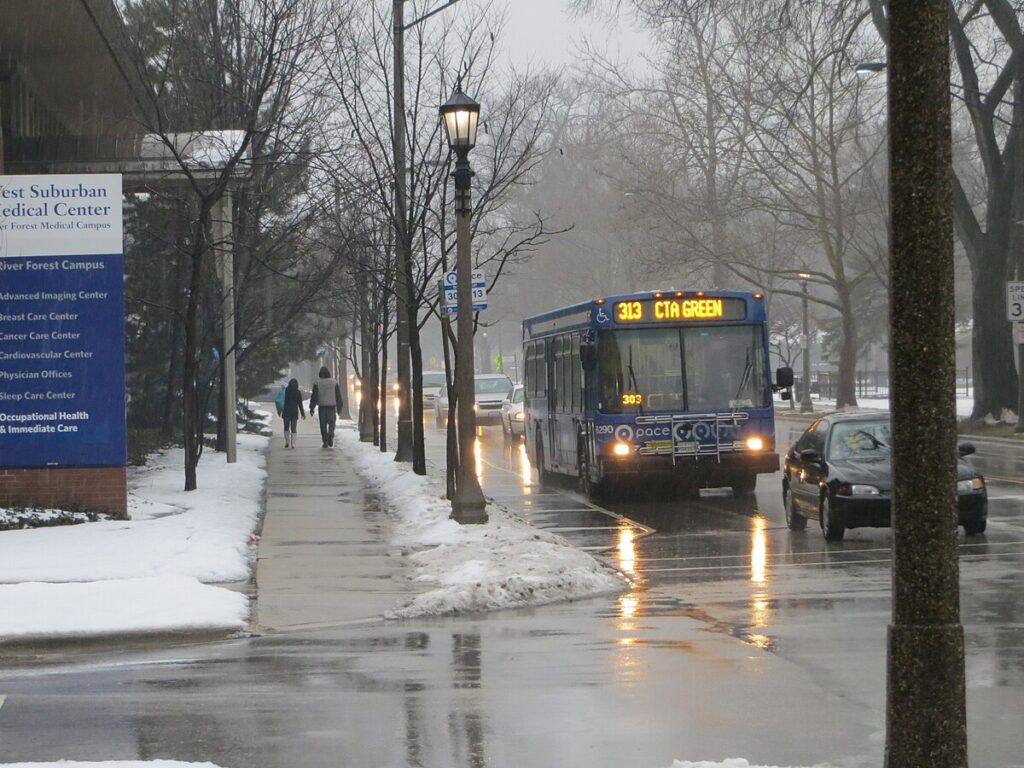
Moving to River Forest, Illinois: A Comprehensive Relocation Guide
Considering moving to River Forest, Illinois? This exclusive Near West village offers Frank Lloyd Wright treasures, tree-lined beauty, and progressive character. With approximately 11,000 residents in 2025, River Forest combines architectural significance with village atmosphere and Chicagoland’s most elegant enclave.
Demographic Profile to Consider If Moving to River Forest:
River Forest’s 2025 population is approximately 11,000 residents in this Cook County village immediately west of Oak Park and Chicago. The median age is around 44 years, with affluent families, professionals, academics, and retirees. The population is approximately 84% White, 7% Asian, 5% Hispanic, 3% Black or African American. River Forest features stunning Frank Lloyd Wright architecture with significant Prairie Style homes, towering trees creating canopy streets, Dominican University campus, and serves as an exclusive Near West enclave. The village attracts very wealthy professionals, academics, and families seeking architectural treasures with exclusivity. River Forest appeals to highly educated, affluent residents valuing architecture, education, and village elegance. The community emphasizes architectural preservation, education, tree preservation, and maintaining exclusive village character. Find trusted local services for moving, living, and working in River Forest.River Forest Relocation Directory
Cost of Living to Consider If Moving to River Forest:
River Forest represents ultra-premium pricing for Chicagoland. Median home values range from $650,000 to $1.2 million+ in 2025, with Frank Lloyd Wright and significant architect-designed homes commanding much more, reflecting the village’s architectural significance and exclusivity. The median household income exceeds $150,000. Rental properties are limited and expensive. Illinois’ state income tax is flat 4.95%. Property taxes are extremely high (Cook County). Overall cost of living reflects River Forest’s status as an architectural treasure and exclusive enclave. The village attracts very wealthy professionals and families. Housing costs create extreme exclusivity with architectural gems. The combination of Frank Lloyd Wright presence, tree canopy beauty, and Dominican University creates ultra-premium pricing.
Economy and Job Market:
River Forest residents typically work in Chicago (immediately adjacent) or throughout Chicagoland as senior executives, successful professionals, academics, or business owners. Dominican University provides education employment. Many hold high-level positions or work in academia, law, medicine, and professional services. The broader Chicagoland economy provides opportunities. Typical commute times to Chicago via CTA or Metra are 20-30 minutes. The affluent, educated population includes many high earners and academics.
Education:
River Forest School District 90 and Oak Park and River Forest High School District 200 serve village students with Oak Park and River Forest High School (shared with Oak Park) offering comprehensive programs. Schools reflect the affluent, educated population. Dominican University (private Catholic) creates academic atmosphere. Concordia University Chicago is nearby. The concentration of higher education and affluent families creates strong educational focus.
Recreation and Lifestyle:
River Forest offers unparalleled tree canopy beauty with towering oaks creating tunnel-like streets designated as a Tree City USA. The village features significant Frank Lloyd Wright architecture with multiple Prairie Style masterpieces including the Winslow House and Roberts House. Dominican University provides cultural programming and beautiful campus. Residents enjoy immediate Oak Park proximity (adjacent) providing shopping, dining, and cultural attractions. Easy Chicago access via CTA Green Line enables city amenities. The lifestyle emphasizes architectural appreciation, tree preservation, education, and village elegance. The village character creates quiet, private atmosphere. The community fiercely values architectural preservation (architectural review ensures quality), tree preservation (strict tree protection ordinances), education, and maintaining exclusive village character. Living in River Forest means extreme costs, prioritizing architecture and exclusivity, accepting village limitations (limited commercial within village), and embracing elegant atmosphere while enjoying Frank Lloyd Wright treasures, tree canopy beauty creating magical atmosphere, and exclusive village character with immediate Chicago access defining the Near West’s most elegant and architecturally significant village.
Healthcare and Services:
River Forest residents access healthcare through Loyola University Medical Center (immediately adjacent in Maywood), Rush Oak Park Hospital, and comprehensive Chicago medical facilities. The immediate proximity to major medical centers ensures world-class healthcare access.
Transportation:
River Forest benefits from CTA Green Line providing direct train service to Chicago, Metra Union Pacific West Line, and Interstate 290 (Eisenhower Expressway). CTA provides excellent access. Many residents walk or bike locally. The village offers walkability within neighborhoods. Typical commute times to Chicago via CTA are 20-30 minutes.
Conclusion:
Moving to River Forest in 2025 offers exclusive architectural living with Frank Lloyd Wright treasures, tree canopy beauty, and village elegance. The village’s combination of Prairie Style masterpieces, towering trees, and Dominican University makes it ideal for very wealthy professionals, academics, and architecture enthusiasts seeking Chicagoland’s most elegant village where Frank Lloyd Wright defines beauty and tree canopy creates magical atmosphere in the ultimate exclusive architectural enclave.

